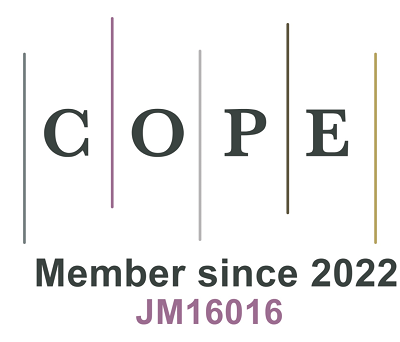REFERENCES
1. Karlsen TH, Folseraas T, Thorburn D, Vesterhus M. Primary sclerosing cholangitis - a comprehensive review. J Hepatol 2017;67:1298-323.
2. Trivedi PJ, Hirschfield GM, Adams DH, Vierling JM. Immunopathogenesis of primary biliary cholangitis, primary sclerosing cholangitis and autoimmune hepatitis: themes and concepts. Gastroenterology 2024;166:995-1019.
3. Gleeson D, Walmsley M, Trivedi PJ, Joshi D, Rea B. Surveillance for cholangiocarcinoma in patients with primary sclerosing cholangitis: can we be more proactive? Frontline Gastroenterol 2023;14:162-6.
4. Chapman MH, Thorburn D, Hirschfield GM, et al. British society of gastroenterology and UK-PSC guidelines for the diagnosis and management of primary sclerosing cholangitis. Gut 2019;68:1356-78.
5. Kilanczyk E, Banales JM, Wunsch E, et al. S-adenosyl-L-methionine (SAMe) halts the autoimmune response in patients with primary biliary cholangitis (PBC) via antioxidant and S-glutathionylation processes in cholangiocytes. Biochim Biophys Acta Mol Basis Dis 2020;1866:165895.
6. Vierling JM. Animal models for primary sclerosing cholangitis. Best Pract Res Clin Gastroenterol 2001;15:591-610.
7. Pollheimer MJ, Trauner M, Fickert P. Will we ever model PSC? Clin Res Hepatol Gastroenterol 2011;35:792-804.
8. Fickert P, Pollheimer MJ, Beuers U, et al; International PSC Study Group (IPSCSG). Characterization of animal models for primary sclerosing cholangitis (PSC). J Hepatol 2014;60:1290-303.
9. Mariotti V, Cadamuro M, Spirli C, Fiorotto R, Strazzabosco M, Fabris L. Animal models of cholestasis: an update on inflammatory cholangiopathies. Biochim Biophys Acta Mol Basis Dis 2019;1865:954-64.
10. Fickert P, Fuchsbichler A, Marschall HU, et al. Lithocholic acid feeding induces segmental bile duct obstruction and destructive cholangitis in mice. Am J Pathol 2006;168:410-22.
11. Smit JJ, Schinkel AH, Oude Elferink RP, et al. Homozygous disruption of the murine mdr2 P-glycoprotein gene leads to a complete absence of phospholipid from bile and to liver disease. Cell 1993;75:451-62.
12. Fickert P, Fuchsbichler A, Wagner M, et al. Regurgitation of bile acids from leaky bile ducts causes sclerosing cholangitis in Mdr2
13. Liu SP, Bian ZH, Zhao ZB, et al. Animal models of autoimmune liver diseases: a comprehensive review. Clin Rev Allergy Immunol 2020;58:252-71.
14. Latasa MU, Gil-Puig C, Fernández-Barrena MG, et al. Oral methylthioadenosine administration attenuates fibrosis and chronic liver disease progression in Mdr2-/- mice. PLoS One 2010;5:e15690.
15. Halilbasic E, Fiorotto R, Fickert P, et al. Side chain structure determines unique physiologic and therapeutic properties of norursodeoxycholic acid in Mdr2-/- mice†‡§. Hepatology 2009;49:1972-81.
16. Hochrath K, Stokes CS, Geisel J, et al. Vitamin D modulates biliary fibrosis in ABCB4-deficient mice. Hepatol Int 2014;8:443-52.
17. Rosenberg N, Van Haele M, Lanton T, et al. Combined hepatocellular-cholangiocarcinoma derives from liver progenitor cells and depends on senescence and IL-6 trans-signaling. J Hepatol 2022;77:1631-41.
18. Arechederra M, Fernández-Barrena MG. Hepatic progenitor cells, senescence and IL-6 as the main players in combined hepatocellular-cholangiocarcinoma development. J Hepatol 2022;77:1479-81.
19. Gao RY, Shearn CT, Orlicky DJ, et al. Bile acids modulate colonic MAdCAM-1 expression in a murine model of combined cholestasis and colitis. Mucosal Immunol 2021;14:479-90.
20. Gauss A, Ehehalt R, Lehmann WD, et al. Biliary phosphatidylcholine and lysophosphatidylcholine profiles in sclerosing cholangitis. World J Gastroenterol 2013;19:5454-63.
21. Stremmel W, Lukasova M, Weiskirchen R. The neglected biliary mucus and its phosphatidylcholine content: a putative player in pathogenesis of primary cholangitis-a narrative review article. Ann Transl Med 2021;9:738.
22. Ehehalt R, Wagenblast J, Erben G, et al. Phosphatidylcholine and lysophosphatidylcholine in intestinal mucus of ulcerative colitis patients. A quantitative approach by nanoElectrospray-tandem mass spectrometry. Scand J Gastroenterol 2004;39:737-42.
23. Stremmel W, Staffer S, Gan-Schreier H, Wannhoff A, Bach M, Gauss A. Phosphatidylcholine passes through lateral tight junctions for paracellular transport to the apical side of the polarized intestinal tumor cell-line CaCo2. Biochim Biophys Acta 2016;1861:1161-9.
24. Stremmel W, Staffer S, Weiskirchen R. Phosphatidylcholine passes by paracellular transport to the apical side of the polarized biliary tumor cell line Mz-ChA-1. Int J Mol Sci 2019;20:4034.
25. Stremmel W, Staffer S, Schneider MJ, et al. Genetic mouse models with intestinal-specific tight junction deletion resemble an ulcerative colitis phenotype. J Crohns Colitis 2017;11:1247-57.
26. Sakisaka S, Kawaguchi T, Taniguchi E, et al. Alterations in tight junctions differ between primary biliary cirrhosis and primary sclerosing cholangitis. Hepatology 2001;33:1460-8.
27. Rao RK, Samak G. Bile duct epithelial tight junctions and barrier function. Tissue Barriers 2013;1:e25718.
28. Lukasova M, Weinberger K, Weiskirchen R, Stremmel W. Onion-skin type of periductular sclerosis in mice with genetic deletion of biliary kindlin-2 as tight junction stabilizer: a pilot experiment indicating a primary sclerosing cholangitis (PSC) phenotype. Metab Target Organ Damage 2024;4:36.
29. Wang W, Kansakar U, Markovic V, Sossey-Alaoui K. Role of Kindlin-2 in cancer progression and metastasis. Ann Transl Med 2020;8:901.
30. der Veen JN, Kennelly JP, Wan S, Vance JE, Vance DE, Jacobs RL. The critical role of phosphatidylcholine and phosphatidylethanolamine metabolism in health and disease. Biochim Biophys Acta Biomembr 2017;1859:1558-72.
31. Ismail IT, Elfert A, Helal M, Salama I, El-Said H, Fiehn O. Remodeling lipids in the transition from chronic liver disease to hepatocellular carcinoma. Cancers 2020;13:88.
32. Korbecki J, Bosiacki M, Kupnicka P, et al. Biochemistry and diseases related to the interconversion of phosphatidylcholine, phosphatidylethanolamine, and phosphatidylserine. Int J Mol Sci 2024;25:10745.
33. Sánchez V, Baumann A, Brandt A, Wodak MF, Staltner R, Bergheim I. Oral supplementation of phosphatidylcholine attenuates the onset of a diet-induced metabolic dysfunction-associated steatohepatitis in female C57BL/6J Mice. Cell Mol Gastroenterol Hepatol 2024;17:785-800.
34. Won TJ, Nam Y, Lee HS, et al. Injection of phosphatidylcholine and deoxycholic acid regulates gene expression of lipolysis-related factors, pro-inflammatory cytokines, and hormones on mouse fat tissue. Food Chem Toxicol 2013;60:263-8.
35. Ishikado A, Nishio Y, Yamane K, et al. Soy phosphatidylcholine inhibited TLR4-mediated MCP-1 expression in vascular cells. Atherosclerosis 2009;205:404-12.









